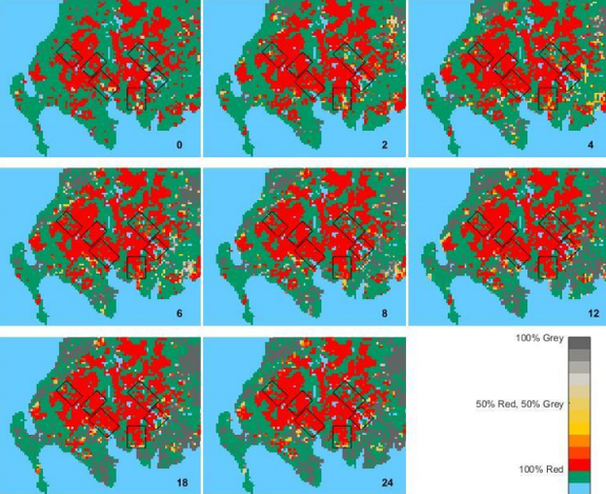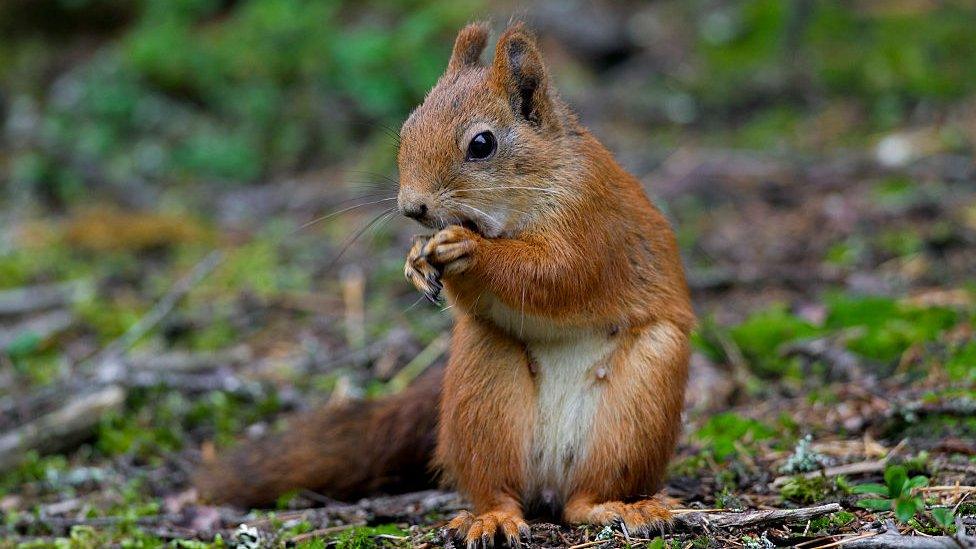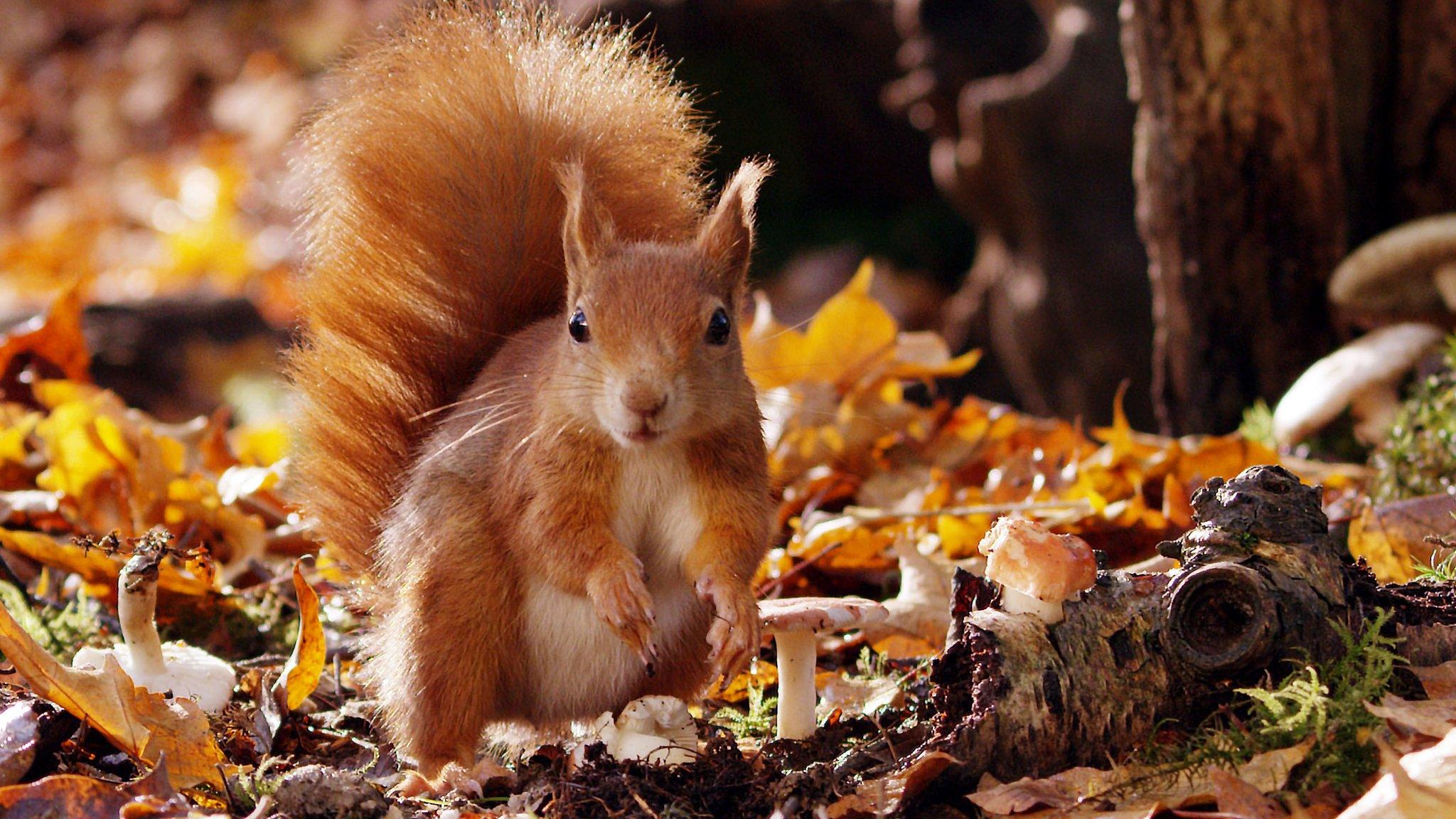Maths helps fight to save red squirrels in southern Scotland
- Published

Squirrelpox - which is deadly to reds - arrived in southern Scotland more than a decade ago
Mathematical modelling is being used to help protect red squirrels from the spread of a deadly virus.
For the past five years it has played an "integral part" in the battle across central and southern Scotland.
Squirrelpox - which is carried by grey squirrels but is deadly only to reds - first arrived in the area in 2005.
Mathematical models, combined with satellite maps of forests and habitats, have been helping to "maximise the success of conservation efforts".


The models looked at the impact of different intensity levels of trapping of grey squirrels

The approach has been pioneered by Prof Andy White of Heriot-Watt University and his team working with Saving Scotland's Red Squirrels.
They have helped to assess the risk of the spread of squirrelpox in Scotland, the effectiveness of grey squirrel control operations and the likely spread of grey squirrels further north.
They found that action being taken by conservation groups to reduce grey squirrel density was helping to reduce the risk of spread.

Action being taken to reduce grey squirrel numbers is helping to reduce the risk of them moving north
Prof White told the BBC Scotland news website: "The model showed that squirrelpox can spread through established, high density, grey squirrel populations in southern Scotland.
"This matched the field observations on the spread of the disease from 2007 onwards in Scotland.
"The model showed that it would be hard to prevent the spread of squirrelpox in southern and central Scotland as the habitat that grey squirrels occupy is well connected."

Studies have found squirrelpox is unlikely to spread through established red populations
However, he said it suggested the disease would struggle to spread beyond central Scotland as the habitat and established grey squirrel populations elsewhere were less well connected.
"This seems like bad news for the reds in southern and central Scotland," he said.
"But the model also highlighted that squirrelpox is unlikely to spread through established red squirrel populations."
Prof White said it showed any outbreaks in the red squirrel population would be "limited to the interface where red and grey squirrels meet".

It is thought red squirrels could "live with" outbreaks of the disease in south of Scotland strongholds
He said that meant that although some red squirrels might be killed by the pox it would eventually "fade out" without spreading beyond a local infection.
Modelling has suggested that could be good news for long-term survival.
"So, squirrelpox may have less impact in Scotland than it had when greys expanded through England," said Prof White.
"The red squirrel strongholds in southern Scotland should be able to 'live with squirrelpox' without significant impacts to reds."
- Published3 May 2018
